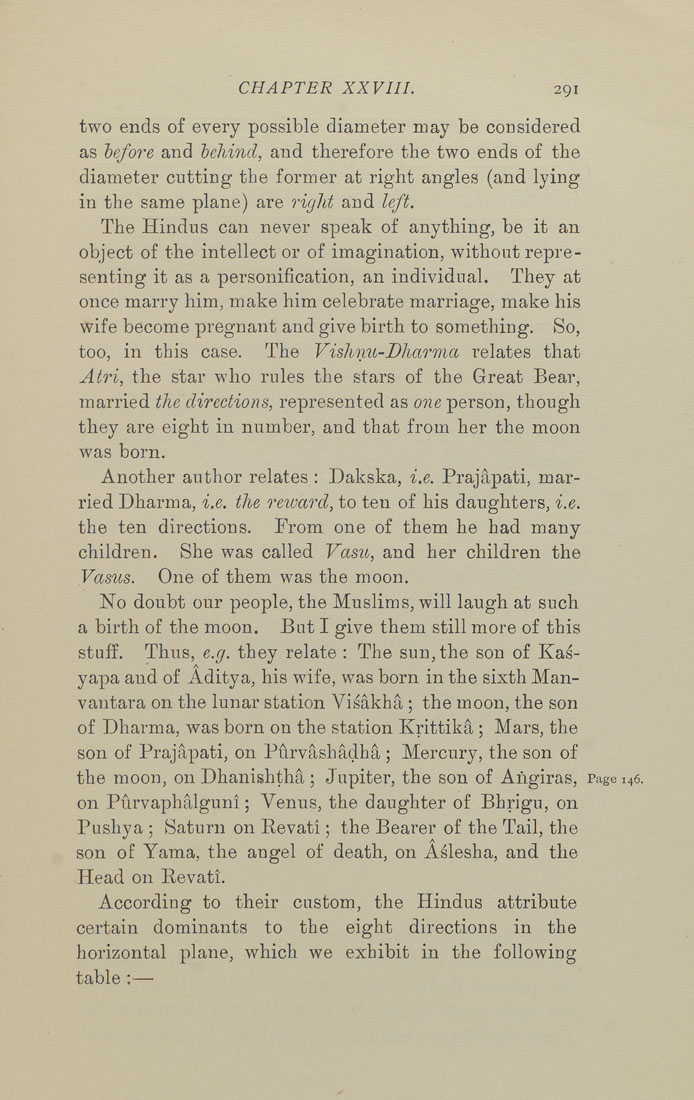CHAPTER XXVIII. 291
two ends of every possible diameter may be considered
as before and behind, and therefore the two ends of the
diameter cutting the former at right angles (and lying
in the same plane) are right and left.
The Hindus can never speak of anything, be it an
object of the intellect or of imagination, without repre¬
senting it as a personification, an individual. They at
once marry him, make him celebrate marriage, make his
wife become pregnant and give birth to something. So,
too, in this case. The Vishnu-Dharma relates that
Atri, the star who rules the stars of the Great Bear,
married the directions, represented as one person, though
they are eight in number, and that from her the moon
was born.
Another author relates : Dakska, i.e. Prajapati, mar¬
ried Dharma, i.e. the reward, to ten of his daughters, i.e.
the ten directions. From one of them he had many
children. She was called Vasu, and her children the
Vasus. One of them was the moon.
No doubt our people, the Muslims, will laugh at such
a birth of the moon. But I give them still more of this
stuff. Thus, e.g. they relate : The sun, the son of Kas¬
yapa aud of Aditya, his wife, was born in the sixth Man¬
vantara on the lunar station Visakha ; the moon, the son
of Dharma, was born on the station Krittika; Mars, the
son of Prajapati, on Purvashadha ; Mercury, the son of
the moon, on Dhanishtha ; Jupiter, the son of Angiras, Page 14
on Piirvaphalguni; Venus, the daughter of Bhrigu, on
Pushya ; Saturn on Revati; the Bearer of the Tail, the
son of Yama, the angel of death, on Aslesha, and the
Head on Revati.
According to their custom, the Hindus attribute
certain dominants to the eight directions in the
horizontal plane, which we exhibit in the following
table :—
|








